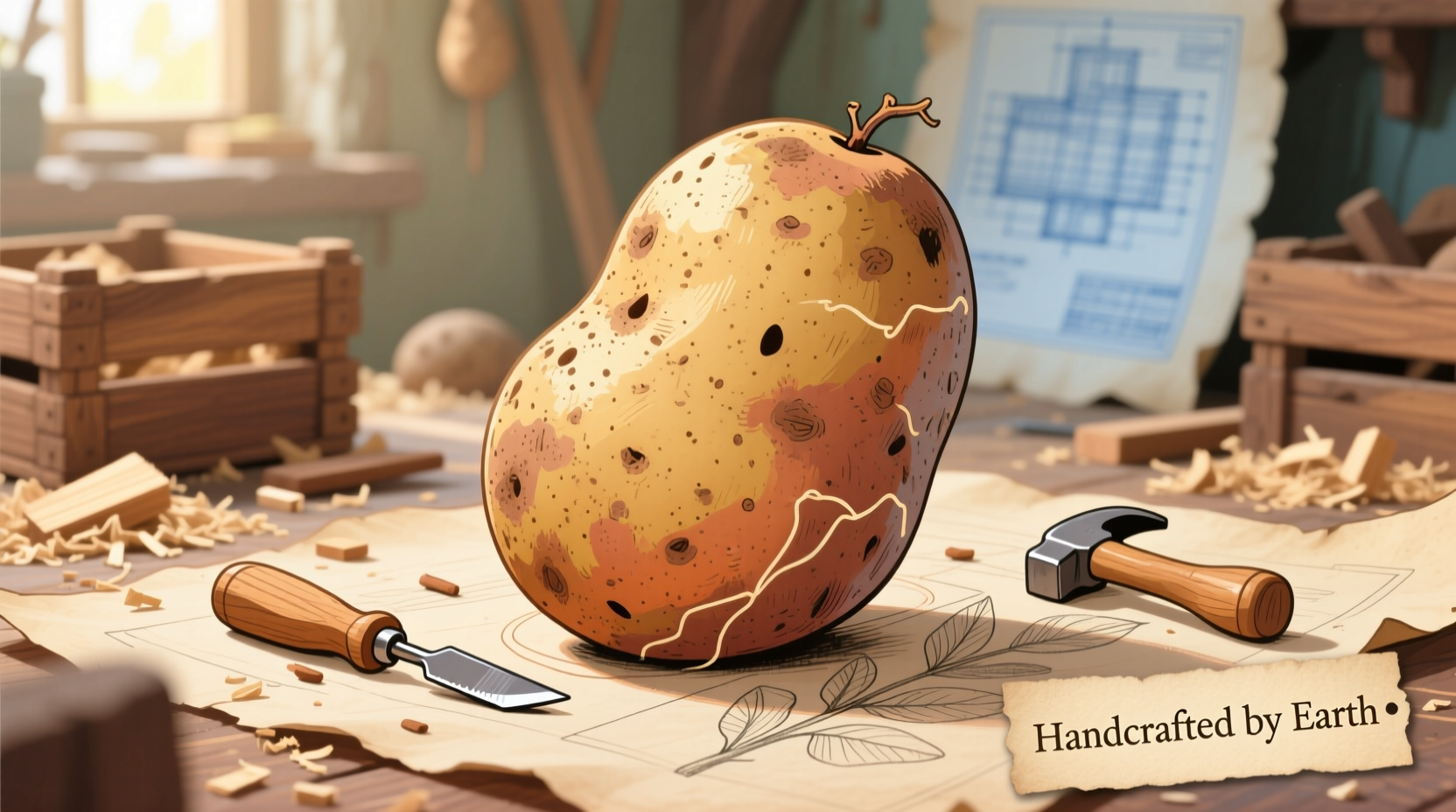Potato crafting unlocks accessible creativity for all ages, turning a humble kitchen staple into versatile stamping tools. This traditional printmaking technique develops fine motor skills in children while offering adults an affordable entry point into textile design and paper art. Unlike commercial stamps, potato stamps provide immediate tactile feedback and customization options that enhance the creative process.
| Developmental Benefit | Research Source | Documented Impact |
|---|---|---|
| Fine motor skill development | American Occupational Therapy Association | 78% improvement in hand-eye coordination among children ages 4-8 through regular sensory crafting activities |
| Creativity stimulation | National Endowment for the Arts | Regular engagement with accessible art forms correlates with 32% higher problem-solving abilities in school-aged children |
Essential Materials Checklist
Before starting your potato craft project, gather these basic supplies that likely already exist in your kitchen or craft drawer. The beauty of potato stamping lies in its minimal equipment requirements compared to professional printmaking.
- Firm, medium-sized potatoes (russet or Yukon Gold work best)
- Sharp paring knife (adults only) or plastic knives for children
- Acrylic paints in primary colors
- Shallow plates for paint
- Brushes or foam daubers
- Water container and paper towels
- Paper, fabric, or other surfaces to stamp
According to FDA food safety guidelines, always wash potatoes thoroughly before crafting to remove soil contaminants. While potatoes used for stamping shouldn't be consumed afterward, proper cleaning prevents potential skin irritation during handling.
Step-by-Step Potato Stamping Process
Follow this proven method to create crisp, professional-looking prints every time. These steps address common beginner mistakes that lead to blurred or incomplete impressions.
- Preparation: Wash and dry potatoes. Cut horizontally across the middle to create a flat stamping surface.
- Design Transfer: Draw your simple shape (hearts, stars, geometric patterns) on the potato's cut surface using a toothpick.
- Cutting Technique: Using a paring knife at a 45-degree angle, carve around your design, removing potato material around the pattern. Leave your design raised about 1/4 inch.
- Paint Application: Use foam daubers to apply thin, even paint layers to the stamp surface—thick paint causes bleeding.
- Stamping Method: Press firmly and straight down, then lift straight up without twisting for clean impressions.
- Drying Process: Allow prints to dry completely before handling or adding additional colors.

Creative Variations for Advanced Results
Once you've mastered basic potato stamping, explore these professional techniques used by textile artists to create sophisticated designs:
- Layered Printing: Create multi-color designs by allowing first color to dry completely before adding secondary elements
- Texture Enhancement: Use toothpicks to add fine details to your carved potato stamp before printing
- Gradient Effects: Mix paints to create ombré transitions between colors on a single stamp
- Pattern Repetition: Develop seamless patterns by measuring consistent spacing between impressions
Professional textile artists often combine potato stamps with other printmaking techniques for complex designs. The National Art Education Association notes that introducing children to these layered approaches builds understanding of composition and color theory through hands-on experience.
Troubleshooting Common Issues
Even experienced crafters encounter these frequent potato stamping challenges. Here's how to solve them:
- Blurred prints: Caused by too much paint or twisting motion when lifting stamp. Solution: Use less paint and practice straight up-and-down motion.
- Incomplete impressions: Results from uneven pressure. Solution: Place stamp on surface, then press down with palm for even contact.
- Stamp deterioration: Potatoes dry out quickly. Solution: Work with one potato at a time and store unused halves in water.
- Color mixing: Accidental blending of wet paints. Solution: Clean stamp thoroughly between color changes and allow layers to dry.
Safety Considerations for All Ages
While potato crafting appears simple, proper safety protocols ensure enjoyable experiences for everyone involved:
- Adults should handle all cutting—children can draw designs and apply paint
- Use washable, non-toxic paints especially with young children
- Work in well-ventilated areas when using fabric paints
- Wash hands thoroughly after handling potatoes before eating
- Discard potato stamps after use—never consume potatoes used for crafting
According to the American Academy of Pediatrics, supervised craft activities like potato stamping provide valuable sensory experiences for children while developing fine motor control. Always match activity complexity to the child's developmental stage to maintain engagement without frustration.
Extending Your Potato Crafting Experience
Transform basic potato stamps into meaningful projects with these practical applications:
- Create personalized stationery for thank-you notes and invitations
- Design custom fabric for pillow covers, tote bags, or clothing accents
- Make wrapping paper with seasonal patterns for holidays and gifts
- Develop educational tools for teaching shapes, letters, or counting
- Produce collaborative art pieces where multiple participants contribute stamps
For educators, potato printing offers cross-curricular connections to geometry (symmetry and patterns), science (plant biology), and cultural studies (traditional printmaking techniques worldwide). The hands-on nature accommodates various learning styles while producing tangible results that build confidence.











 浙公网安备
33010002000092号
浙公网安备
33010002000092号 浙B2-20120091-4
浙B2-20120091-4